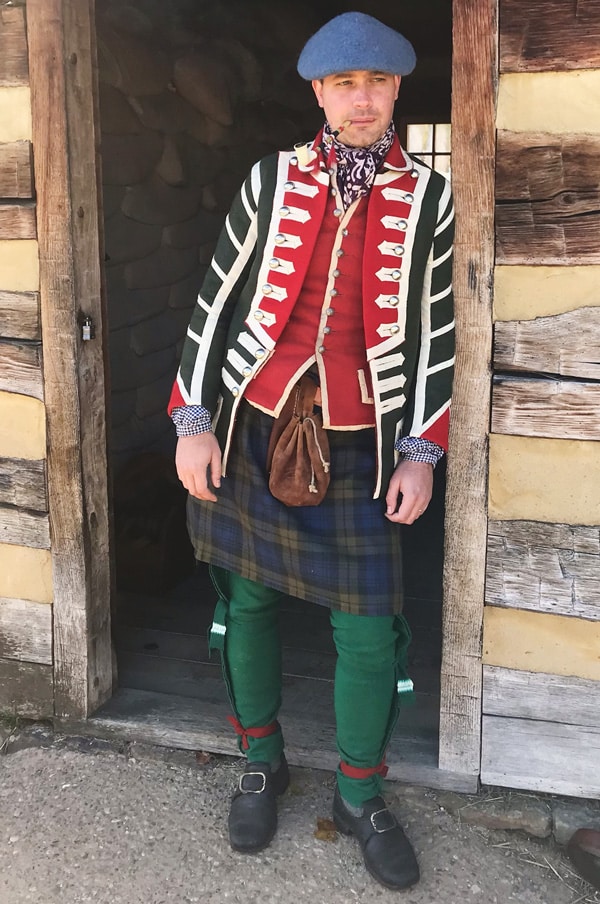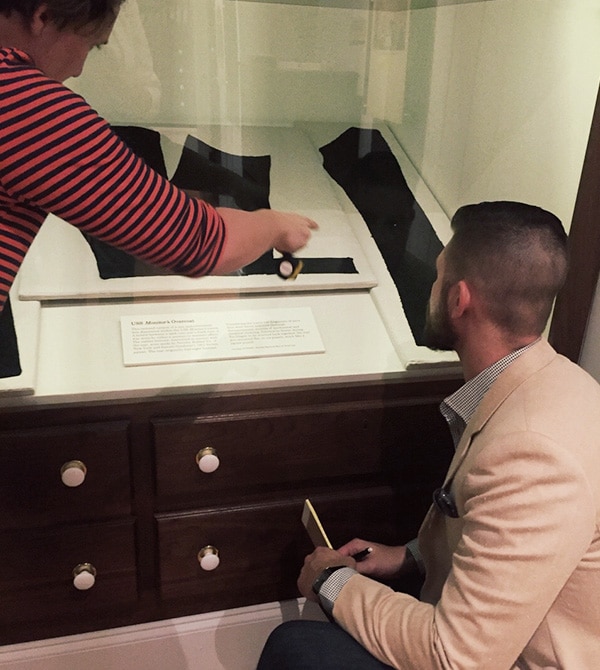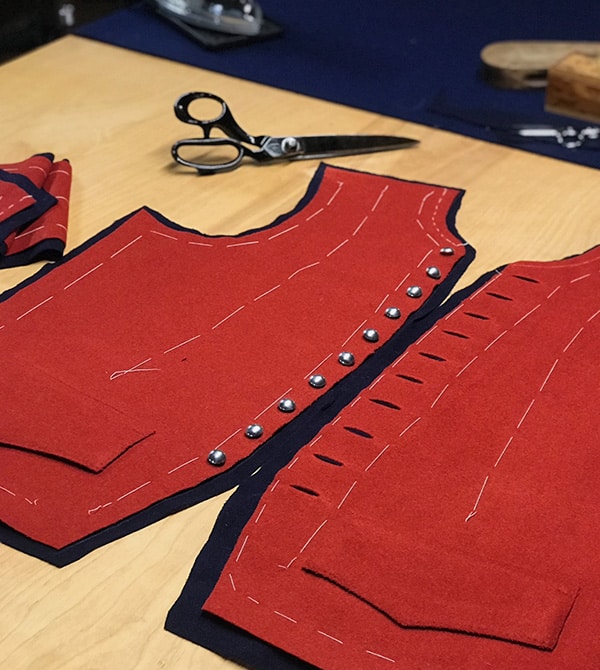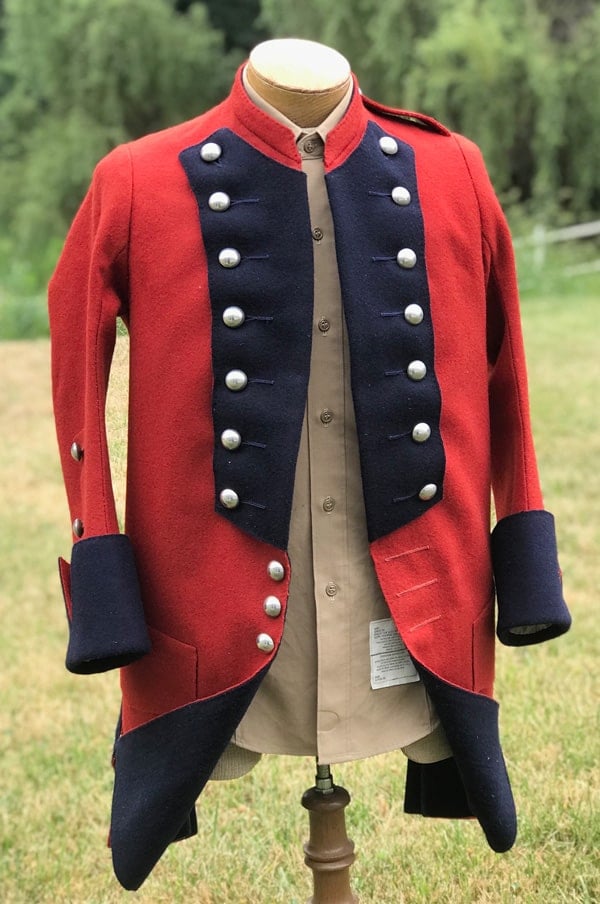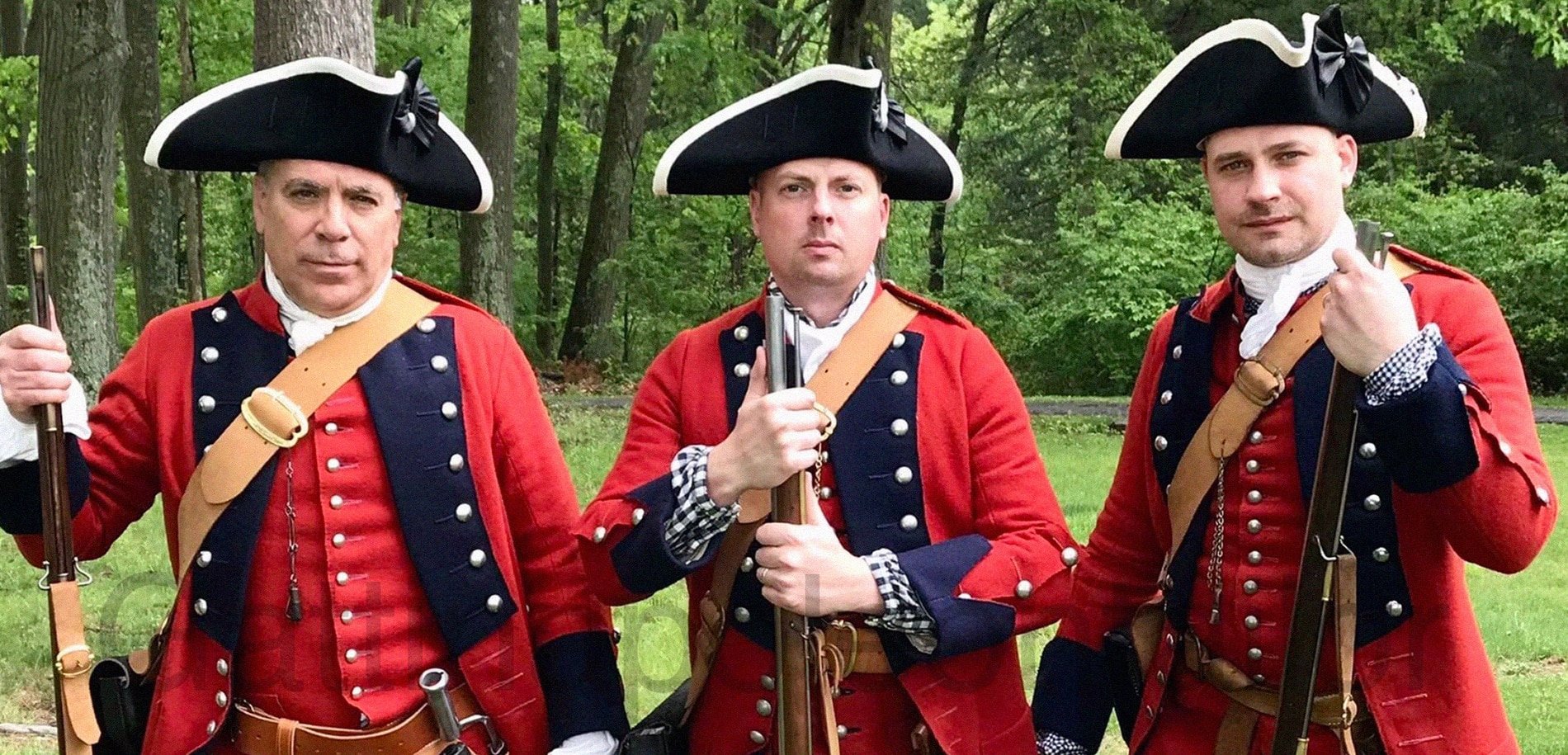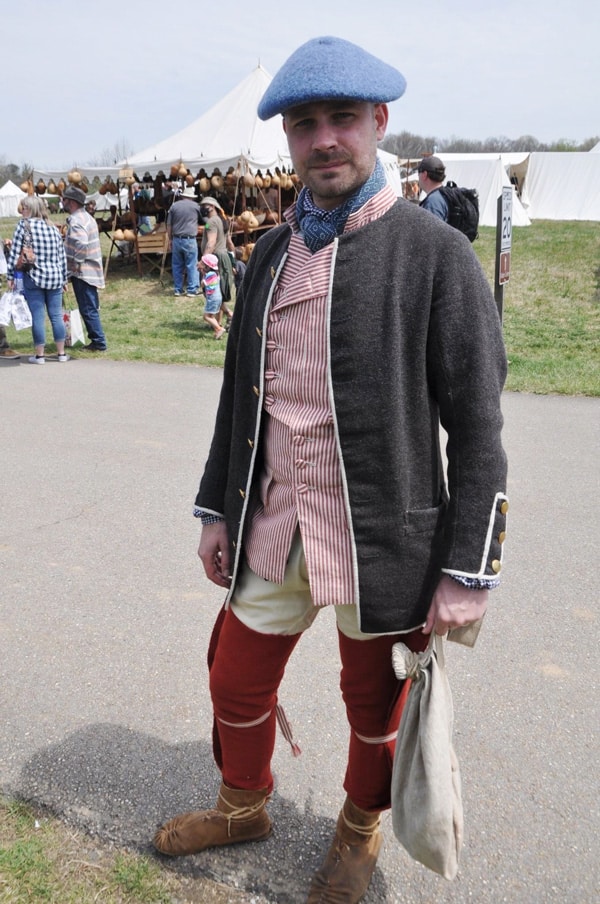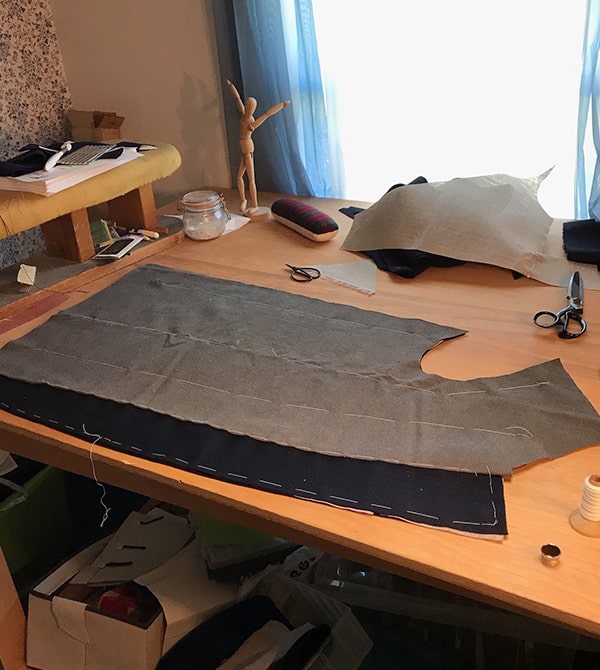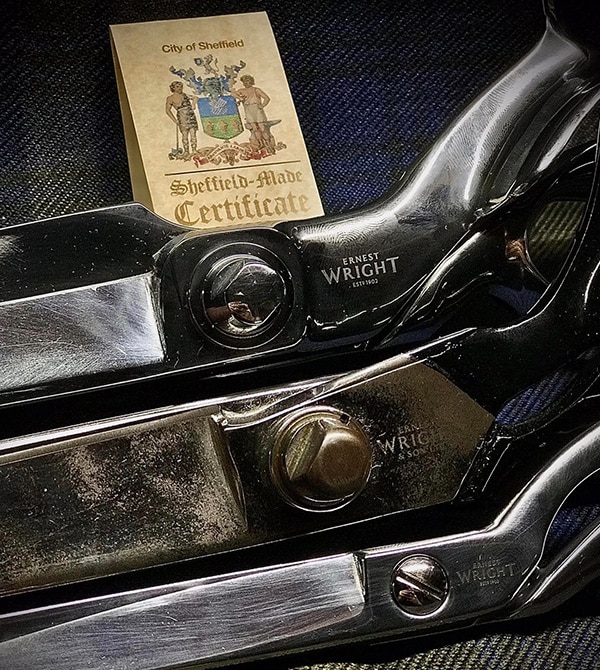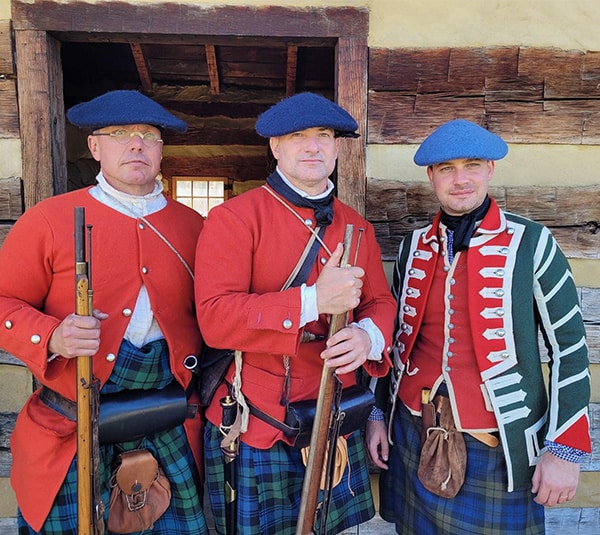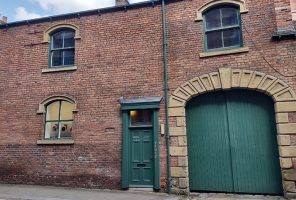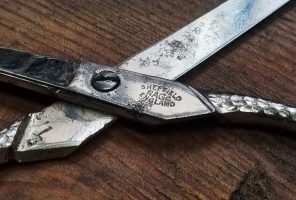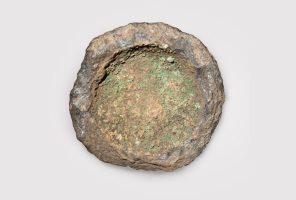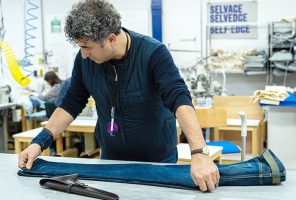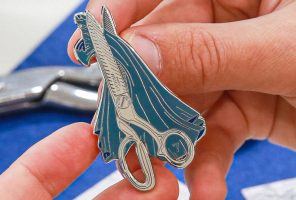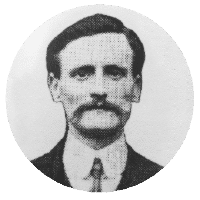The making of Sam Napoleon
“Historical accuracy is, in part, what I’m selling,” says Sam Napoleon, while glancing over his shoulder at a row of paper jacket patterns, each bespoke to a particular customer. “If my name is attached to something, you can be reasonably confident it’s up to date, at least as far as the research is.”
Many of Sam’s clients are living history practitioners – passionate educators who like to dress the part, while they inform the public about historic events such as the American Civil War. Some of the others are museums. In either case, historical accuracy is a must.
Sam didn’t always see himself working in historical tailoring, but the profession certainly seems true to his own past.
“When I was a kid I was involved in various historical things at a number of sites, and my first job was at a history museum in downtown Pittsburgh, where Fort Pitt used to be,” says Sam.
“I joined the Marine Corps, and I did my “four for the Corps and no more,” as they say. And after that, I wanted to do something with my hands – but not sweat.”
Inspired by a mentor in the historical tailoring community, Sam started learning to make garments – and over time, he established himself as a go-to tailor within his niche. You’ll now find Sam’s ‘Gatti Napoleon Historical Tailoring’ labels sewn, ever so discreetly, onto the linings of many a splendid historical garment.
True to history
Whereas modern tailoring begins and ends in the tailor’s shop, a Sam Napoleon garment will have its origins in historical sources – be they paintings, historic tailoring instructions or archived military memos.
“If somebody comes to me and says I’m looking for a uniform, 48th regiment, 1755, then I’ll know we’ve got some digging to do now,” says Sam.
“When military officers retire, they’ll usually have papers that get published – things like official dispatches or general orders for a day, and these usually get saved.”
“In there, you’ll find clues to what you’re looking for. A pay receipt for something. An order to get things repaired or replaced. That kind of thing. You’ve gotta find these little clues and put them together, and you fill in the gaps with general rules that seemed to exist in the time period.”
Not only is Sam’s forensic approach to fashion heritage crucial to his work; it once helped historians at the Mariners’ Museum in Virginia to patch together the story of an original historic garment.
“They have the USS Monitor there – the famous Civil War ironclad ship – and when they raised the turret, they found what’s called a pilot coat in it, which is like an earlier version of a naval peacoat,” says Sam.
“They were able to save large portions of the garment, and they wanted a recreation to display with the original pieces. I got to go down and study the original pieces, and I was able to help them interpret the garment a little bit more correctly. They gave me a piece of material they thought was the lining, but which I knew to be interfacing. And we also found a small piece of lining that hadn’t dissolved under the ocean, which was made of jean cloth – a common material in the 19th century. They were not aware of that, so that was neat!”
Every last detail
When Sam’s historical research into a garment is completed, he can move on to the tailoring itself.
“Once we settle on the details, I will measure the customer, and from those measurements I draft a pattern bespoke to the customer. I then cut the garment and baste it together for a first fitting, and following fittings are scheduled based on need,” Sam explains.
If you think that sounds suspiciously straightforward, by Sam’s standards, you’d be correct. A host of fine details make his process quite different from that of the typical tailor. For one thing, there’s the historically accurate materials.
“In order to source materials, you rely on other people who have a similar nerd level of interest in silly things,” says Sam.
“Most of the fabrics I use are made in a mill in England, owned by Kochan and Phillips Historical Textiles. They produce 18th and 19th century materials as accurately as possible, by doing things like using madder root to make madder cloth, which is the typical British red of that time.”
“And I also have a guy who makes the buttons – jewellery work is his full-time job. Some types can be quite rare. For example, in the Seven Years War period, the British used something called a gasback button – it’s a three-piece hollow button, and it weighs next to nothing. If you have 30 buttons on a coat that’s a great idea. Only one person makes them, at the moment.”
Historical garments aren’t just made differently; they fit differently too – something which Sam points out to new customers at the outset.
He explains: “The weight of traditional garments, and the cut of them, are considerably different to what we’re used to today. They kind of force you into a certain posture, and they have a different feeling around the shoulder and the armpit that’s not typical of a modern garment. So, it feels very strange the first time you encounter it.
“I have to tell the customer: you’ll be happy when we get to the end of this, you’ve just gotta trust me.”
Time-honoured tools and techniques
Sam doesn’t pretend to spurn all modern conveniences in his historical tailoring work. For instance, he uses a tape measure instead of the unwieldy system of paper and notches which predated that tool – “because numbers are cool,” as he says.
However, all of Sam’s garments are traditionally hand-finished, and clients have the option to get even the inside seams hand-sewn, if they so wish. The result is an aesthetic entirely of another time.
There are also some traditional tools on Sam’s work table, including – we’re honoured to say – three models of Ernest Wright shears.
“I got my first pair about twelve years ago – the 13-Inch Classic Tailor Shears. I haven’t even had them sharpened yet.. They’ve been my workhorse, and they cut everything – all types of wools, linens, silks, interfacing. They’ve been flawless.
“And when you guys announced the 13-Inch Heritage Tailor Shears, I knew I was buying that pair, so I got in the waiting game with everyone else. I got those specifically to be used with modern garments or lighter materials. I also have the 8.25″ Shears for whenever appropriate.”
Further to our own shears, Sam shows us a fabulous pair of original, late-18th century shears with long blades and angular bows, bearing the mark ‘GAMBIA’, which means they must have been made in the Pea Croft area of Sheffield, very close to our current workshop.
Crafts and history are forever in conversation. Knowledge, skills, and minute, glittering details pass improbably through space and time – sometimes over oceans, or centuries. It takes a craftsperson like Sam Napoleon to pick up these scattered gems and put them to use.
See more of Gatti Napoleon Historical Tailoring via Instagram.
